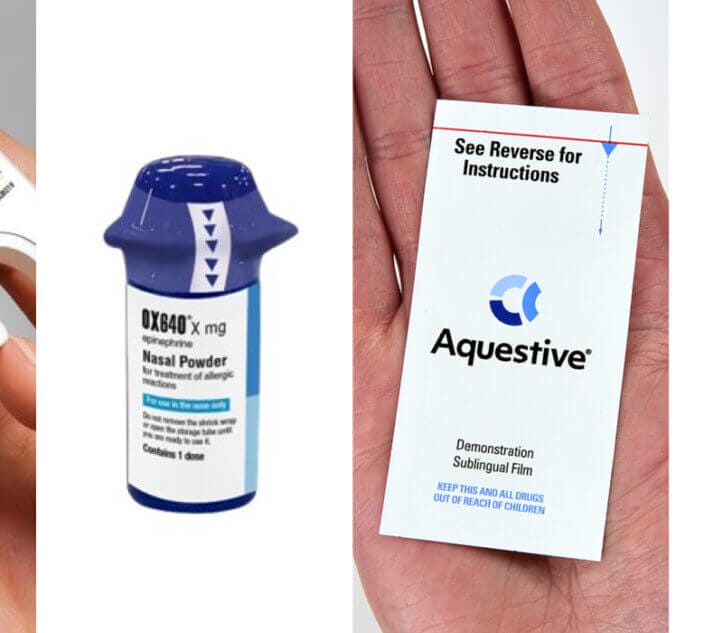Nevada’s Governor Brian Sandoval signs epinephrine bill amid food allergy families. On left (in yellow) is Caroline Moassessi, spokesperson for the Nevada Food Allergy & Anaphylaxis Alliance and the northern Nevada asthma and allergy support group; on right is Susanne Stark (white jacket) of the Las Vegas parents’ support group.
The hard work of food allergy advocates is leading to real change across the United States.
In the summer of 2013, Nevada, Florida, Tennessee and Oklahoma became the latest states to pass an epinephrine bill. These bills require schools to have “stock” auto-injectors on hand, in case a student experiences an anaphylactic reaction to a food or sting and doesn’t have his or her own medication available.
To date, more than 20 states have passed epinephrine laws or guidelines and several more are considering bills that would allow schools to keep auto-injectors on hand in case of an emergency.
Florida, Tennessee and Oklahoma schools will now be allowed to acquire epinephrine that hasn’t been prescribed to a specific student. The Nevada legislation goes a step further, “requiring” schools to have epinephrine on hand in case of emergency.
Nevada Epinephrine Bill Requires AIs
Caroline Moassessi, spokesperson for the Nevada Food Allergy and Anaphylactic Alliance, explains that the requirement was discussed at length during a committee hearing. The feeling among advocates and legislators was that if auto-injectors were “allowed” but not required, “eventually, the energy around this legislation could die out,” she said.
They also didn’t want any disparity between school districts with well-off parents and those in lower-income areas. “They wanted all students to be protected, not just those schools that could afford it,” she said. Her group led the lobby for the Senate bill.
When the governor signed Senate Bill 453, making it law, “I felt as if an extra safety net was just placed under my children,” said Moassessi. “If my child requires a second dose or if something goes wrong with the first dose, I now know there is back up available and they will not be gasping for air while waiting for an ambulance. This is priceless.”
Moassessi also notes that numbers alone may make the risk of having a reaction greater in Nevada schools. The state showed a prevalence rate among children and young persons of about 9.5 percent in Dr. Ruchi Gupta’s 2012 study of food allergy prevalence. That’s considerably higher than the national food allergy average of 8 percent of children under 18.
Bills Flow from Tragedy
The push to start keeping stock epinephrine began in 2011 in Illinois, after teenager Katelyn Carlson of Chicago died of anaphylaxis from unknowingly eating peanut in food at a school party. The 13-year-old’s death led to the first stock epinephrine law – in the state of Illinois. Then in 2012, Amarria Johnson, who was only 7 years old, died in Richmond, Virginia after eating a peanut. Like Katelyn, she didn’t have an epinephrine auto-injector at school, and she died on the way to hospital. Virginia, too, became an early adopter of a stock epinephrine law.
The needless loss of these two girls sparked widespread interest in stock epinephrine laws and guidelines. Local food allergy support groups and FARE, the nonprofit allergy organization, have been lobbying since for more laws or guidelines to prevent any further tragedies.
It should be noted that a school’s stock auto-injectors are not meant to replace children’s own auto-injectors, but rather are there in case of an unexpected circumstance, such as a new allergy, missing device or allergic reaction requiring an extra dose.
For others looking to lobby their state on the stock epinephrine issue, Moassessi stresses the importance of collaboration. “Uniting parents statewide and creation of our working group – which included school nurses, the pharmacy board, physicians, Mylan Specialty (with its four free EpiPens for schools program), and the various nursing, school and teachers’ associations – this was key to creating legislation that would be successful.”






